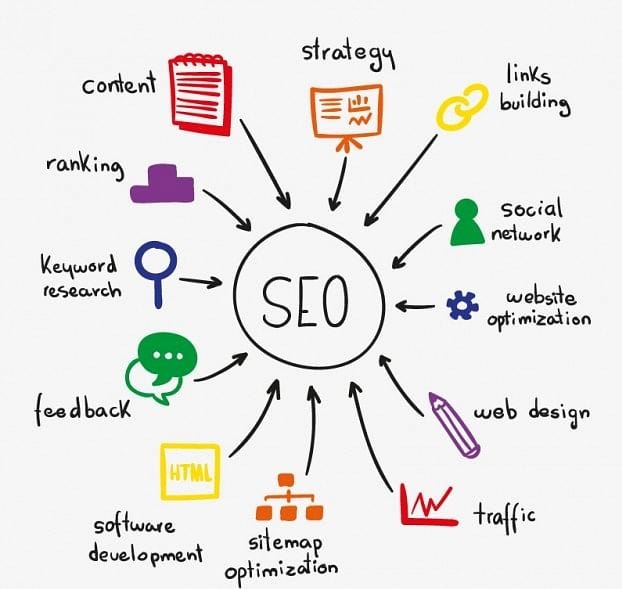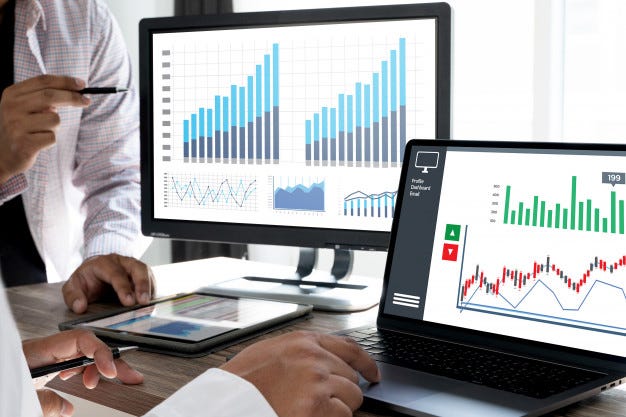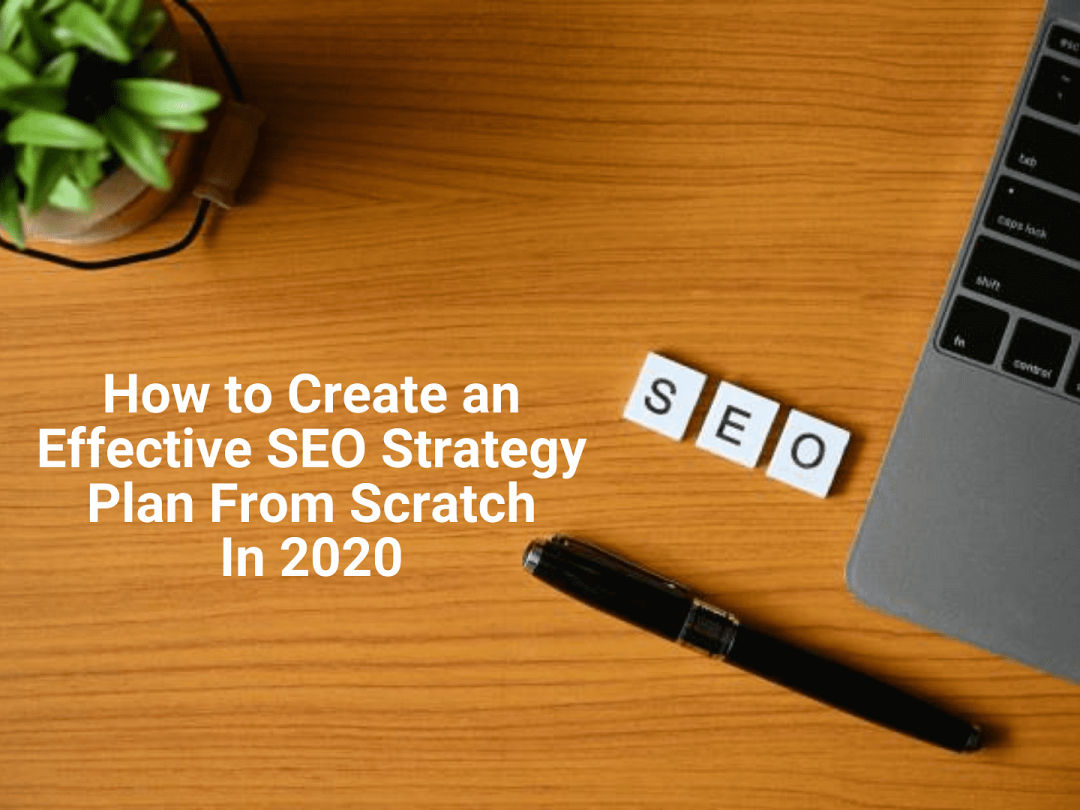In this post, you’ll learn SEO, and What is SEO and How to Create an Effective SEO Strategy Plan From Scratch In 2020
" title="YouTube video player" frameborder="0" allow="accelerometer; autoplay; clipboard-write; encrypted-media; gyroscope; picture-in-picture; web-share" referrerpolicy="strict-origin-when-cross-origin" allowfullscreen>
With keep changing world, everyone is getting online to sell or to promote there products or services. the only marketing strategy you should start with SEO ( search engine optimization) because it is one the Best Online Marketing Strategy to your business. In today’s world of competition, SEO doesn’t Use to work as it was working in the past years. You need to keep upgrading yourself with new updates and always try to implement new strategies that may boost your ranking in SERP.
SEO is the place where the customer comes to You. Now SEO is important because it keeps the search results fair. User trust search engine result’s provided by Google and you achieving a top position in the organic search result Signals to users that your site is a Genuine and trusted Source.
The Higher You Rank in SERP Page, the more clicks from the potential customer to your Business Will generate.
After Achieving the first position also in the search engine result page of Google we get technically 5th position because Ads and people also ask for a box. these ads are generated with the help of Google Ad-words for Advertisers or generally called as Pay per click ( PPC ads ) despised of all these most of consumers in Google wants Organic results and according to blacklinko #1 result in Google’s organic search results has an average CTR of 31.7%. … Organic CTR for positions 7–10 is virtually the same.
What is SEO strategy?
Search engine optimization is the process of implementing best practices as per search engine guidelines in other words process of planning and implementing to Rank Higher in search results.SEO is generating traffic to our site using when some click on our ranking organic search result.

Here is a Step by Step Guide to create SEO Strategy Plan
- Step 1: Low Hanging Keywords
- Step 2: Analyze Your Competition on 1st page
- Step 3: Categorized Pages for Each Topic
- Step 4: On-Page Optimization
- Step 5: Off-page Optimization
- Step 6: Technical Optimization
- Step 7: Mobile-Friendly Design
- Step 8: Stay updated on SEO news
- Step 9: Analytic’s track your content’s success.
Low Hanging Keywords
Start Your SEO with Keyword research. Frist Decide which keywords can give benefits to your business.there are many tools available in the online for keywords research. the most famous and perfect is the keyword planner by Google. Do your research according to your target location. when you’re doing these also measure Keyword Difficulty means competition of that Keyword for Your target location. then start with Low Hanging Keywords to your Business. Low Hanging Keywords are long-tail keywords which are easy to rank as compare to Short tail keywords For Example
one word phrases — T-shirt
- characteristics
- High-volume
- High-Competition
- Low-conversion rate
Two-word phrases — orange T-shirt
- characteristics
- High-volume
- medium-Competition
- Low-conversion rate
Long Tail Keyphrases — John Cena’s orange T-shirt in India
- characteristics
- Low-volume
- Low-Competition
- High-conversion rate

Low Hanging Keywords
Analyze Your Competition on 1st page
Know you did with keywords research the next step is to analyze Competition of your keywords on the first page. for that need to installed MOZ Bar extension which gives you page authority and domain authority matrix by which you can understand the overall authority of the websites which ranks on top of the SERP page. MOZ gives a free extension which shows the PA( page authority) and DA ( Domain authority ) and Spam Score which many marketers ignore But don’t You dare to do that. the values provided by MOZ lies between 1- 100 now for just understanding
- Low Competition of a keyword can be concluded when the top 3 websites ranking for that keyword gets Domain authority less than 25 and page authority can be between 1–40.
- Medium Competition of a keyword can be concluded when the top 3 website ranking for that keyword gets Domain authority less than or equals to 50. page authority can be between 1–70
- High Competition of a keyword can be concluded when the top 3 website ranking for that keyword gets Domain authority more than 50. page authority can be between 1–100.
Categorized Pages for Each Topic
When it comes to the website ranking to can’t Build 1 page to cover almost every keyword of your business. when you follow these you will never rank in SEPR for Organic Results. To avoid that try to build as many pages as possible for your business products or services. Then categorized it in a simple way where your customers and Google can easily find you.
Creating a substrate page for a product or service may cost more but it will help in ranking more than a single page.
On-Page Optimization
Before we get started, On-page optimization, keep one thing in mind always that the following SEO element is for over-optimizing. Google has unleashed an over-optimization penalty that targets websites that have too many keywords stuffed onto one page so don’t do that.
1. Domain
Starting On-page optimization with Domain Name. now selecting name a for Business is different Topic but an extension of the Domain is a direct concern with SEO .choosing an extension for the Domain is very important. Which extension is good for You? I’ll Say go with Location-based extension for example if your business is targeting one country
- India then go with www.yourname.in
- Australia — www.yourname.au
- USA — www.yourname.us
2. Protocol
For any website, the HTTPS version is very Important in ranking factors. According to research the secure version of a website that is HTTPS contains 2 % of vintage in the ranking of a website.
3. URL
optimizing URLs is another step in on-page optimization. add your target keyword in the URL so that Google can easily understand what this page is about.
4. Title Tag
Title Tag Optimization of your website tells search engines what the page is about. the limit for characters in the title is 70 or less than that. You Titel includes your business and brand name and target keyword which is related to your page.
5. Meta Tags
This tag is another signal to search engine which gives insights of more info what your page is about. the limit for characters in the meta description is between 155–160 characters.
6. Content
in Content, Optimization content is optimized to become more attractive, useful, and actionable to users. The processes typically include improvements in content and adding latent semantic keywords with keeping the technical performance (ex: page speed) of the website optimize.
7. Heading
The Heading optimization is making one main heading by adding
tags to the title in the blog. there must be only onetag and The and tags on the page — there can be multiple instances of both.
8. Internal Links
Link building isn’t about doing external link building to your website. you can help search engines learn more about your website by adding internal links to the most important page of your site or the relevant content on another page of your site
9. Image Optimization
Now Every website uses images in it to make it more attractive to users to read any article and reduce the bounce rate and increases the engagement rate of the page. Adding Alt-tag and name of the image helps Google to understand what is that image is about or who is in it. by this tag, your images can also rank in google image search
10. Social Signals & Footer
Don’t overstuff keywords in anchor text in the footer of the website, give links to relevant and important pages. Try to organize linked in a pattern to follow don’t just throw them into a big list. Add your all Social media handles to the footer so that customer can also follow
Off-page Optimization
Off-page optimization refers to the activity that you add links to your site to raise your website in the SERP page without disturbing your site is called off-page SEO. when you do link building for a particular page from other sites to your site, in other words, you’re giving signals to Google that this page has authority in this topic or keyword to which you’re building links on that keyphrase(anchor text)
link building strategies
as your starting off-page from Scratch the first strategy I’ll recommend you to go with Competitor links
Competitor links as you already know who are your competitors when you’re doing competitor analysis. there different websites giving you links data but they are paid. if have a good budget then you can follow with this option or just give a trial to this option because it is one the easiest and has a higher approval rate but paid.
many of them give a free trial of their service just give it a trial at least to SEMrush, ahrefs, and Moz Because these are the best tool for SEO, and Digital Marketing.
Guest Blogging — this next strategy is the future of off-page or link Building in SEO because Google is getting smarter and taking down buy and paid featured links and considered as spam. the links which have higher domain authority and provide value through its content which may come more organically or with Guest Blogging. with this strategy will have to make content( Article, infographic, graphics, etc) and submit it quality websites related to your niches.
Here are some of the other link building strategies
- Directory Submissions
- Local Business Submission
- Classified Posting
- Q & A Backlinks
- Blogging & Blog Comments
- Press Release
- Document Sharing
- Other Advanced Strategies
Technical Optimization
For a new website, we have to look at these following Technical factors to optimize

Technical Optimization
1. Website Speed Optimization
Loading Time for a website is a crucial part which is the most important part of Technical SEO. on average if your website loads 6 seconds then the chances are your more than 50% of customers will leave before your page loads.
Here are the best practices to reduce loading time
- Enable compression
- Minify CSS, JavaScript, and HTML
- Reduce redirects
- Remove render-blocking JavaScript
- Leverage browser caching
- Improve server response time
- Use a content distribution network
- Optimize images
Sitemaps Generation
A Sitemap is an XML file that lists the URLs for a site. It allows webmasters to include additional information about each URL: when it was last updated, how often it changes, and how important it is concerning other URLs of the site.
Robots.txt File
The robots. txt file is to tell the exclusion protocol to search engines. It is a text file which says that which pages of the website should crawl and which pages not to crawl for privacy reasons
Rich Snippets
Rich Snippets (also known as “Rich Results”) are normal Google search results with additional data displayed. This extra data is usually pulled from Structured Data found in a page’s HTML. Common Rich Snippet types include reviews, recipes, and events.
Mobile-Friendly Design
Why your website should have Mobile-Friendly Design
As of February 2019, mobile devices accounted for 48 percent of web page views( total mobile population amounted to 4 billion unique users) worldwide, what is Mobile-Friendly Design
in Simple Words, Mobile-Friendly Design means the content which is on your website must be easily readable, accessible across all different platforms in all different Devices including smartphone to desktops and tablets. the Mobile-Friendly Design makes your website with its content including text, images, videos, links, etc flexible to adjust in different devices.
Stay updated on SEO news
SEO gets more difficult when don’t get yourself updated with the upcoming updates from search engines. it’s tough to rank your website on top of the SERP result page, and when you get hit with unknown updates your all hard-work will collapse. with a lack of information for a new update will get another disadvantage that Your competitor will overtake you with new opportunities came with the updates
Here are a few resources to keep you updated with the Digital Marketing world
- Hubspot
- backlinko
- Neil Patel
- SEOmoz
- Search Engine Roundtable
- Search Engine Land
- Diggity Marketing
Analytic’s track your content’s success.

SEO takes a lot of time and effort. What gets terrible is when can’t trach your progress of growth. There are many SEO metrics you can track on a daily and monthly basis o keep your SEO plan on track and measure your success.
With the tool provided by Google called Analytic’s, which helps you to track your total visitors, including organic, advertising, social media, direct, and others. Also, tracking indexed pages, leads, ROI, inbound links, keywords, and your actual ranking on SERPs can help you recognize your success as well as identify areas of opportunity.
Hope You like this
Thank You





